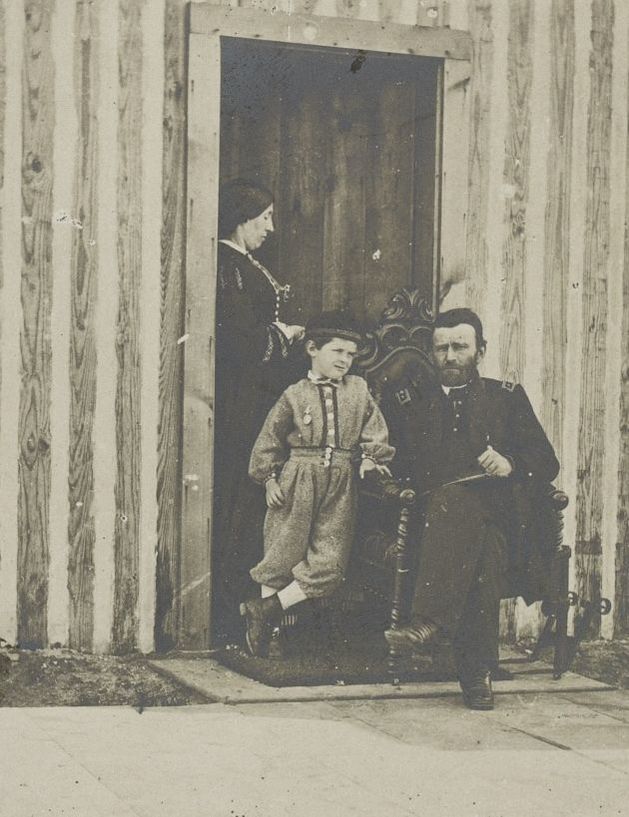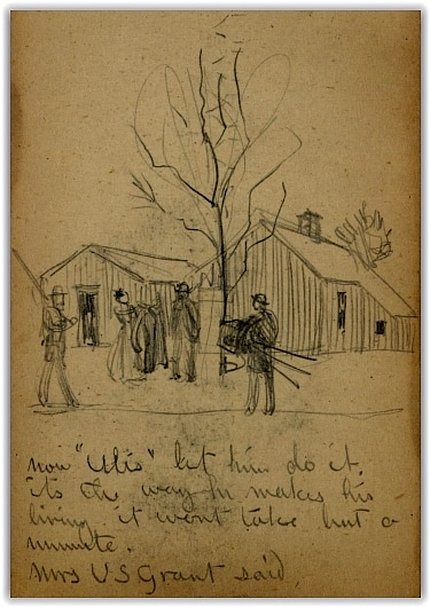The Petersburg Project uses photographic image id's from the Library of Congress for searching. The easiest way to search photographs is to input the numerical id. It is not technically correct, but it gets results. For example, "00518" brings up a distinct photo with less work than trying to reach the negative image.
Photographic Images of the Siege of Petersburg
A major source for us on the siege of Petersburg has been the photographic images made during and after the campaign -- many of them literally on the day the siege ended. Various photographers produced hundreds of images, for the Union army and for commercial sale. Many are of groups of soldiers, camps, and headquarters; others show scenes in and around the city of Petersburg, showing shell-damaged structures and scenes of interest. For our purposes, the most useful have been the images taken of the siegeworks of both sides, as well as the numerous scenes from the battlefield of the 9th Corps' attack up the Jerusalem Plank Road on April 2nd, 1865. Most have long been misidentified or unidentified. We managed to identify nearly all of them, including the subject of the scene and the exact location of the camera. The photographs have given us an excellent understanding of the terrain, the engineering methods and materials, and the state of the art in both siege construction and battlefield entrenchment.
What makes these images especially valuable is the fact that many of them are very high-resolution scans of the original glass-plate negatives that the Library of Congress produced and made freely available on its website. The clarity of these photographs is remarkable, even when zoomed in 500 percent or more. Photo editing software has allowed us to bring out details that in some cases are too small or too faded to be seen by the naked eye, ranging from distant forts and batteries to rifle loopholes. Even after studying them for years, we are still learning to interpret them and pulling out new information . In this way, the Petersburg photographs have literally opened up a whole new vista on that campaign and on trench warfare in the 1860s.
What makes these images especially valuable is the fact that many of them are very high-resolution scans of the original glass-plate negatives that the Library of Congress produced and made freely available on its website. The clarity of these photographs is remarkable, even when zoomed in 500 percent or more. Photo editing software has allowed us to bring out details that in some cases are too small or too faded to be seen by the naked eye, ranging from distant forts and batteries to rifle loopholes. Even after studying them for years, we are still learning to interpret them and pulling out new information . In this way, the Petersburg photographs have literally opened up a whole new vista on that campaign and on trench warfare in the 1860s.
|
The Photographers
|
|
Image Groupings
The numerous photographs taken of the siege of Petersburg can be isolated into groupings or clusters -- photographs taken about the same time and in the same general area, usually by the same photographer. Petersburg Project researchers (and others before us) have identified some of the principal groupings. Union Scenes:
Confederate Scenes:
|
Now "Ulis" let him do it. It's the way he makes his living. It won't take but a moment". Julia Grant to a reluctant-to-be- photographed Ulysses S. Grant, as recorded by sketch artist/ enlisted man Charles Wellington Reed at City Point.



